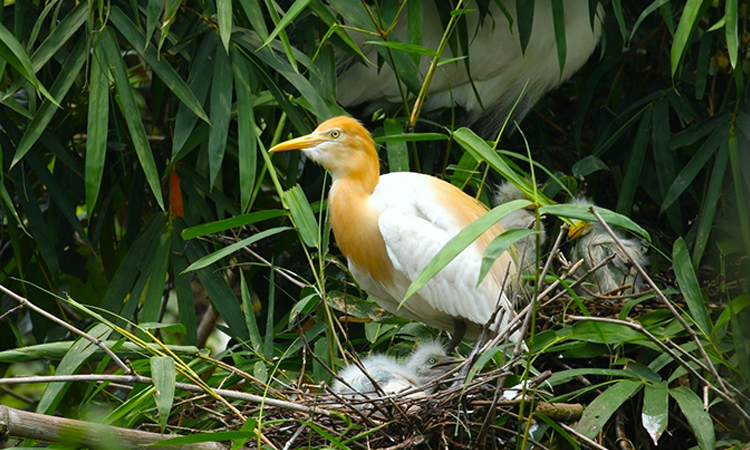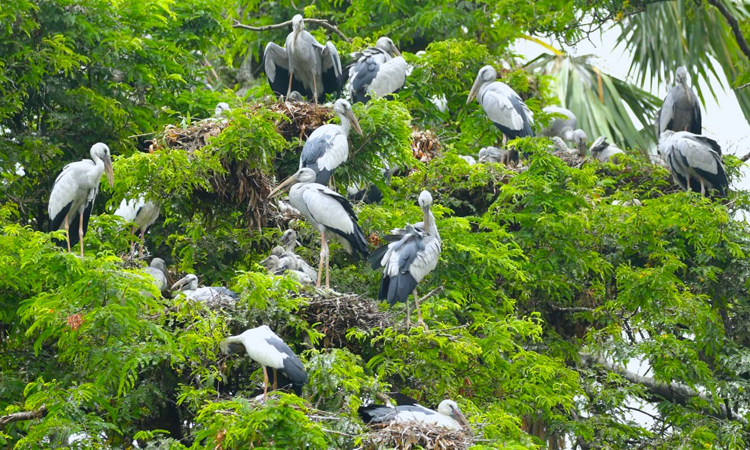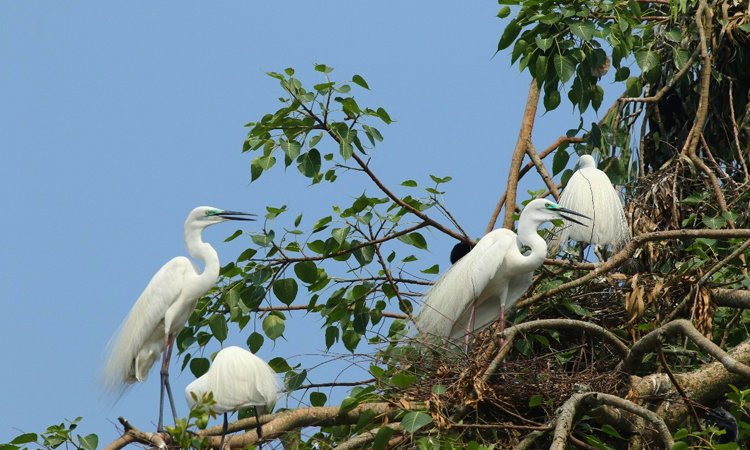News Flash

By Mah Alam
JAHANGIRNAGAR UNIVERSITY, Oct 9, 2025 (BSS) - Bangladesh's northern and northeastern wetlands are home to more than 1.7 lakh colonial waterbirds, highlighting the country's rich biodiversity.
Yet, this thriving population is increasingly under pressure from human activity and environmental degradation.
A recent study published in the in August 2025 provides the first comprehensive survey of colonial waterbirds in the region.
Titled "Population Estimation, Species Composition, Colony Characteristics, and Spatial Distribution of Colonial Waterbirds in North and North-Eastern Bangladesh," the research documents population patterns, species diversity, and conservation challenges faced by these birds.

The study was conducted by researchers from the Department of Zoology at Jahangirnagar University and the Bangladesh Wildlife Center, with support from the Bangladesh Forest Department.
The team included Allama Shibli Sadik, Ashis Kumar Datta, Md Kamrul Hasan, Rima Akter, Mehedi Hasan Khan, and Professor M. Monirul H. Khan, who served as the senior author.
The survey covered 24 districts across four divisions Rajshahi, Sylhet, Rangpur, and Mymensingh, identifying 367 waterbird colonies, of which 287 were active.
Among them, 235 were nesting colonies and 52 were night roosts, supporting an estimated 171,552 birds from 16 species.
Rajshahi Division hosted the largest share of waterbirds at 40 percent, followed by Sylhet at 29 percent, Rangpur at 17 percent, and Mymensingh at 14 percent.
The high number of birds in Rajshahi is linked to extensive rice cultivation, wetlands, and floodplain ecosystems that provide ideal nesting and feeding sites.
The study recorded the Cattle Egret (Bubulcus ibis) as the most common species, making up 34.29 percent of the population, followed by the Little Cormorant (Microcarbo niger) at 26.69 percent and the Asian Openbill (Anastomus oscitans) at 10.59 percent.
Other frequently observed species included the Great Egret, Intermediate Egret, Little Egret, and Black-crowned Night Heron.
Rare species, including the Asian Woollyneck Stork (Ciconia episcopus), the Lesser Adjutant (Leptoptilos javanicus), and the Indian Cormorant (Phalacrocorax fuscicollis), were found in very low numbers, raising conservation concerns.
Notably, the study identified Bangladesh's only known Lesser Adjutant breeding colony in Thakurgaon district.
Most colonies were tree-nesting, with 228 built on large trees, three on towers, and four on the ground. One colony in Domar upazila of Nilphamari district was over 200 years old, reflecting the long-term stability and site fidelity of these species.

Despite this ecological richness, the study warns that many colonies face immediate threats.
About 66 percent of abandoned breeding sites were lost due to human disturbance, habitat destruction, and felling of nesting trees.
Additional threats include nest poaching, hunting, poisoning, livestock intrusion, and uncontrolled tourism. Natural factors such as storms, lightning, heavy rainfall, and predation by crows, kites, snakes, and fishing cats also contribute to nest failure and chick mortality.
"All colonial waterbirds play a crucial role in wetland ecosystems, contributing to nutrient cycling, regulating food webs, and aiding in seed dispersal and vegetation regeneration," said Allama Shibli Sadik, corresponding author and ornithologist at the Bangladesh Forest Department.
"Fluctuations in their populations often indicate the ecological health of wetlands. The loss of major colonies could have cascading effects on biodiversity and ecosystem balance," he added.
The study highlights that colonial waterbirds have historically received limited conservation attention in Bangladesh.
Researchers called for stronger legal protection, restoration of key breeding and foraging habitats, and restrictions on fishing, cattle grazing, and human movement near colonies during breeding seasons.
Community involvement is also critical. The study urged engagement with local residents, schools, and youth organizations in awareness and monitoring activities.
Installing protective signboards and deploying wildlife watchers can help prevent poaching and nest destruction.
Many colonies overlap with internationally recognized wetlands such as Tanguar Haor, Hakaluki Haor, and Hail Haor, designated Ramsar sites and Important Bird Areas.
Protecting these areas would safeguard local breeding populations and support migratory birds along the Central Asian Flyway.
Professor Monirul H. Khan emphasized integrating colonial waterbird protection into the National Biodiversity Strategy and Action Plan and implementing it at the field level.
"If immediate measures are not taken, these ancient colonies may not survive the coming decades," he warned, urging government action, including compensating individuals to prevent tree felling and protect houses from bird droppings.
The study underscores that long-term conservation success requires combining scientific monitoring with active community participation, ensuring Bangladesh's wetlands continue to sustain both wildlife and human livelihoods.